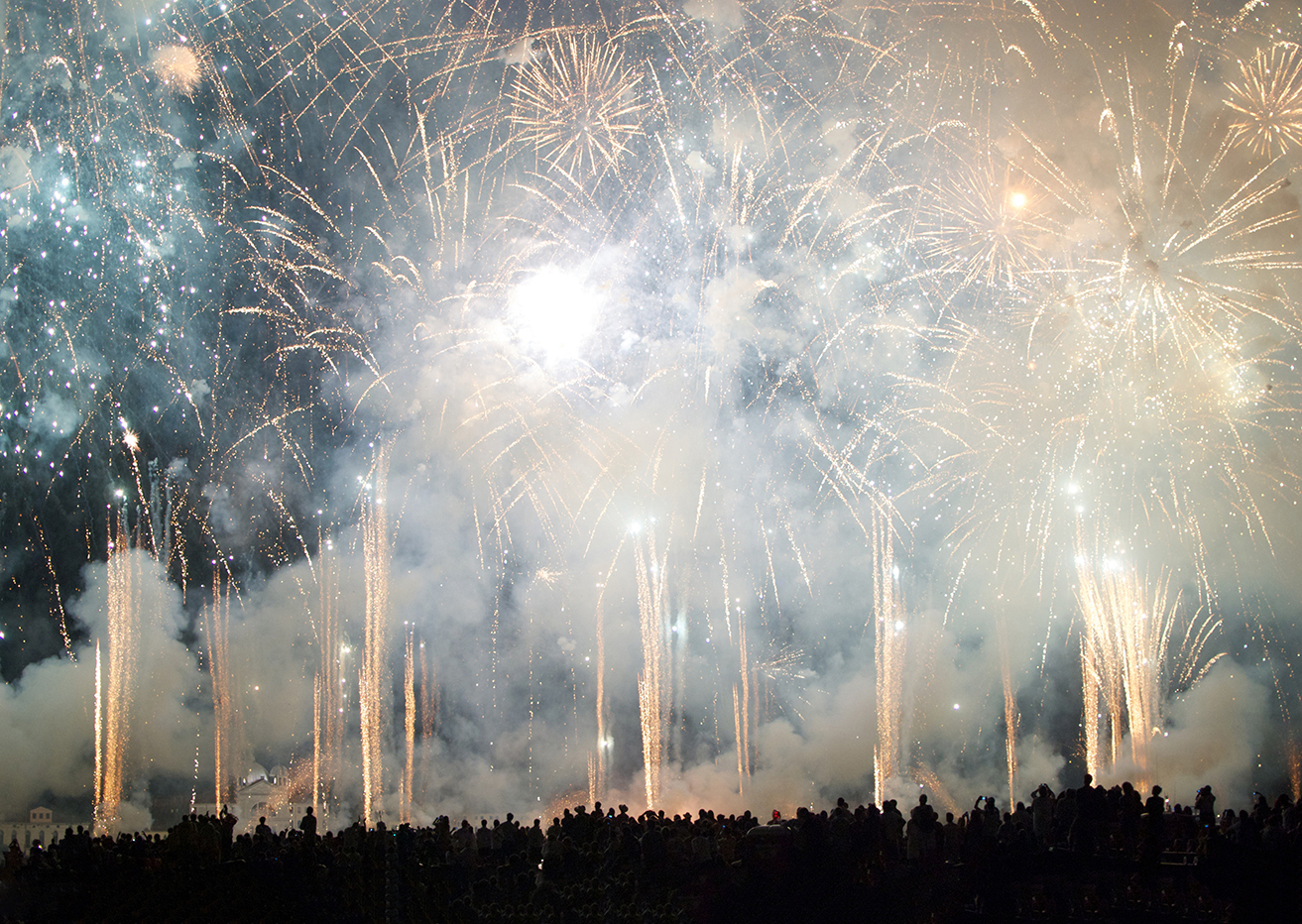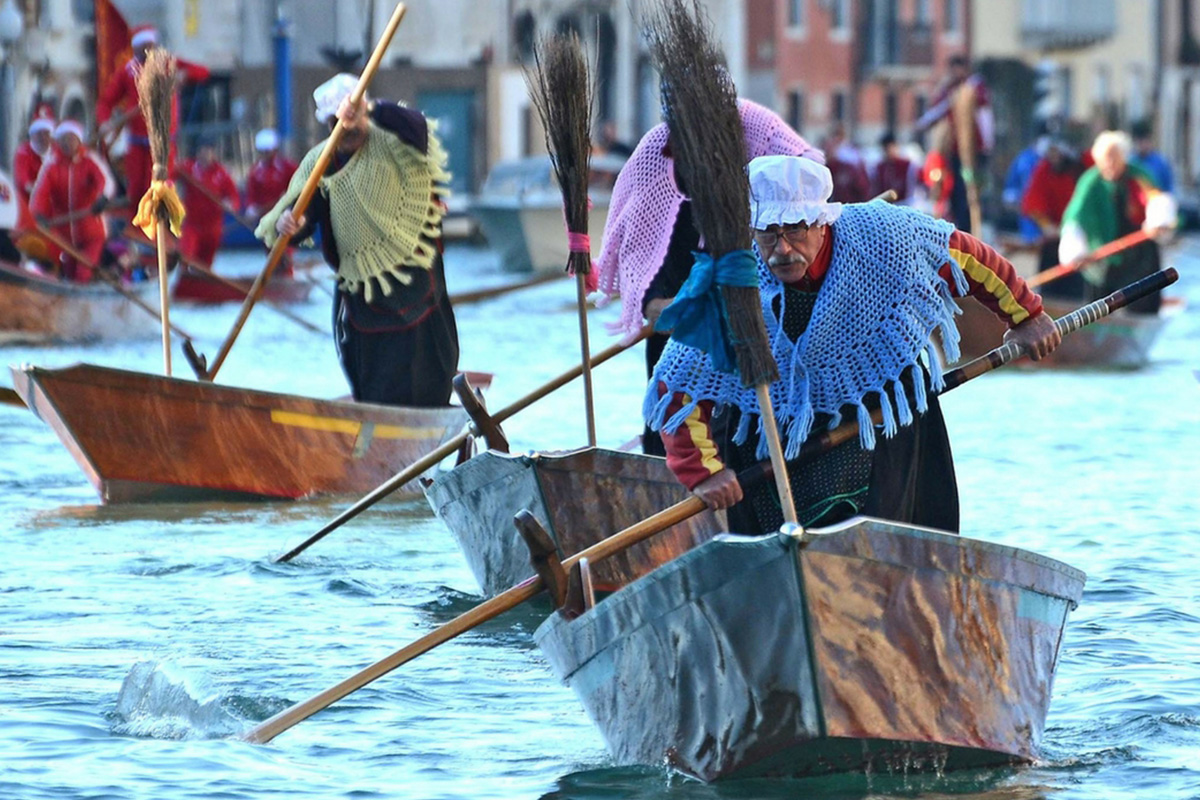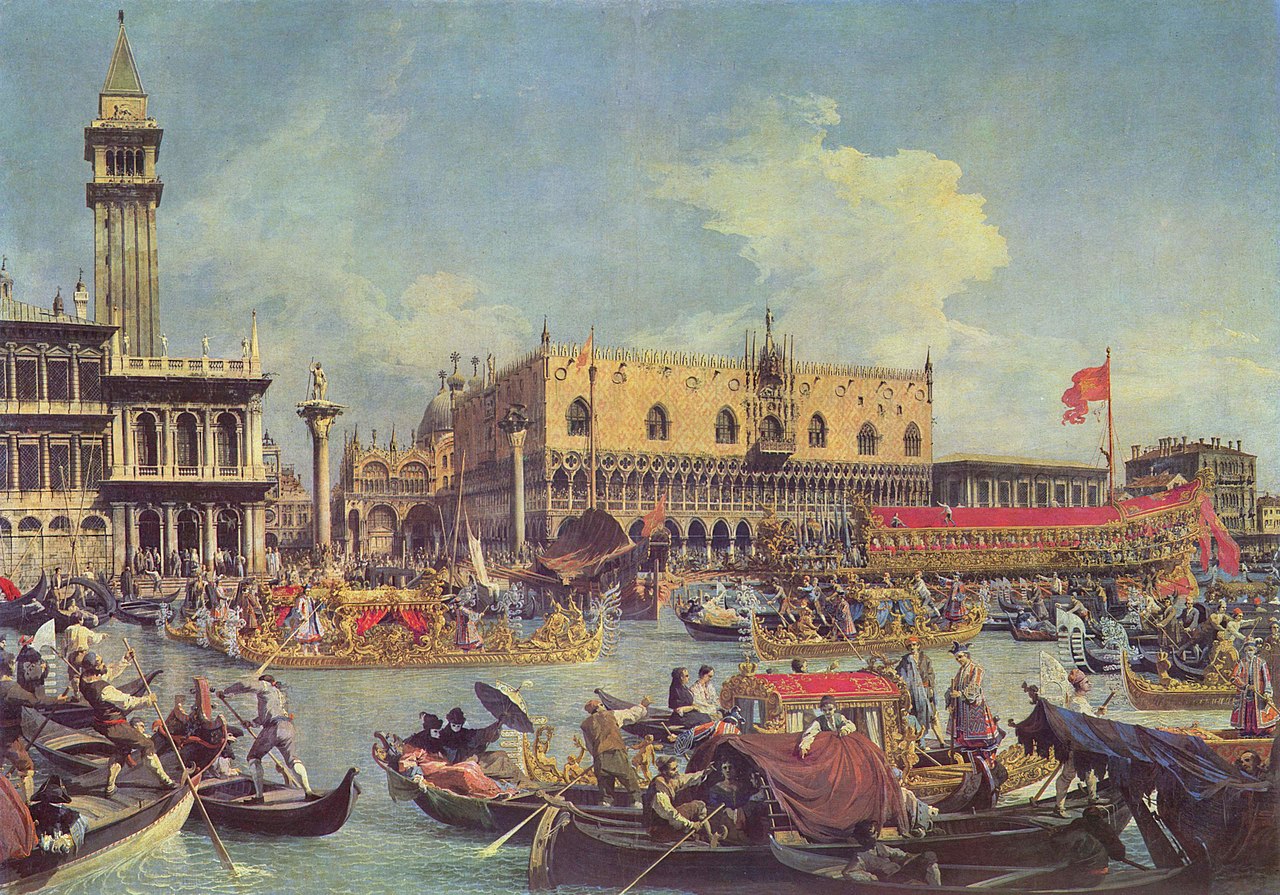
A 1,600-year history
By Rachele Callegari
March 25, 421 – March 25, 2021. 1,600 years have passed since the founding of Venice, from the first settlement on an island slightly higher than the others and for this reason called Rivus Altus, hence Rialto, when the barbarians had invaded the mainland and the only hope of salvation seemed to be represented by the lagoon. It is handed down that the founding act of the city was the construction of the church of San Giacomo di Rialto, as confirmed by the Diari of Marin Sanudo, who in describing the fire that had hit Rialto in 1514, writes “[…] solum restò in piedi la chiexia di San Giacomo di Rialto […] la qual fu la prima chiexia edificata in Venetia dil 421 a dì 25 Marzo, come in le nostre croniche si leze […]”.
To celebrate these 1,600 years of history, the municipality of Venice established the Venice 1600 Committee, composed of important public, academic, cultural and social figures in order to carry out a project capable of exalting all the aspects that have made Venice great. From the words of Mayor Luigi Brugnaro, we can grasp the essence of these initiatives: “A general call addressed to all those who love the city and want, also on this occasion, to pay homage to the history and values of Venice. In this path, which will accompany us until March 25, 2022, the City Administration has committed itself to promoting and coordinating the initiatives related to the celebrations, with the intention of flanking the events promoted directly, those prepared by actors, private or public, individual or in associated form, from the Venetian, Italian and other countries of the world territory. Venice will thus be celebrated not only here, but in all those places that have linked a part of their history with that of our Serenissima city.” The logo of the initiative contains within it three of the most important Venetian symbols: the lion of St. Mark’s, the three domes of the Basilica and finally the quadrilobes of the Doge’s Palace, which form in their intersection the number 1600.
The celebrations were inaugurated by the mass celebrated by Patriarch Francesco Moraglia inside St. Mark’s Basilica on the morning of Thursday, March 25. In attendance was the mayor, Luigi Brugnaro, who held a press point outside the Basilica at the end of the mass. In a heartfelt speech, he retraced the fundamental steps in the history of Venice, from the barbarian invasions of 452 to the great changes of the 20th century, which led to the birth of the so-called “Veneto model,” made up of innovation, enterprise and autonomy. It could not miss a mention of the “Great Waters” that in 1966 and 2019 wounded the city, which has, however, always managed to rise up and be reborn, despite its fragility. A city that throughout its history has always welcomed, given space to anyone who showed love for it and will continue to do so, strong in its thousand-year tradition of freedom and industriousness. And finally, a look to the future, almost a plea for everyone to work together to build a bright future for a city with a unique past. Venice, the oldest city of the future: this is the slogan chosen to pursue important initiatives not only in the artistic and cultural sphere, but also, and above all, in sustainability and environmental protection. Two fundamental points, the mayor stressed, to allow Venice to continue to be the center of attraction it has been until now.
Venice: from its founding to the present day
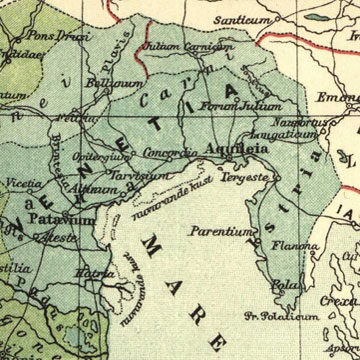
From founding to Byzantine rule
The origins of Venice are in many ways still obscure, and sources on the subject are also scarce or lost. What is certain is that the settlement of the first populations originated from the 6th century and was a very slow process, which only in the 9th century gave the city the conformation we know today. The city arose on the ancient territories of the Byzantine Venetia Maritima, placed under the control of the Exarchate of Ravenna.
A number of cities on the mainland that had flourished in Roman times contributed in different ways to the development of Venice: Aquileia, Oderzo, Concordia, Altino, Padua, and Treviso, which were part of the large province of Venetia et Histria. This was invaded in 568 by the Lombards, who occupied the inland territories and relegated the Venetics to the coastal areas, where other centers later developed. In the late seventh and early eighth centuries, Venetia, like the other Byzantine provinces, became a duchy placed under the control of a dux; according to tradition, the first Venetian dux was Paulus Lucius Anaphestus, who began the long series of those later called doges. The Venetian islands remained under Byzantine power even after the Lombards ended the power of the Exarchate in 751, but things changed about fifty years later, when a representative of the pro-Frank and anti-Byzantine party was elected doge. Venice thus entered the territorial orbit of Charlemagne, nevertheless setting out to become an increasingly independent territory.
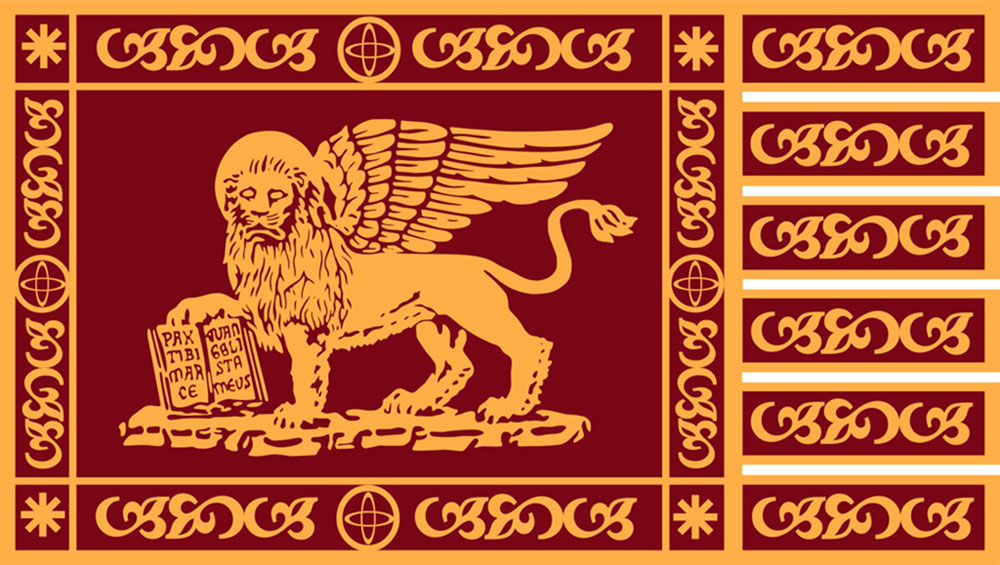
The Republic Period
The Republic of Venice, known since the 17th century as the Most Serene Republic of Venice, was one of Italy’s four maritime republics, establishing itself throughout its history as a major economic power at the European level. Founded, according to tradition, by the first doge, it was initially limited to the area of Dogado, the territory occupied by the city today; over the course of its 1,000-year history, it annexed much of northeastern Italy, Istria, Dalmatia, the coasts of Montenegro and Albania, some of the Adriatic and Ionian islands, and even as far as the Peloponnese, Crete, Cyprus, most of the Greek islands and some eastern Mediterranean cities.
The Dogado began to prosper shortly after its founding through important trade with Byzantium and other eastern territories and consolidated its dominance over the Adriatic in the 9th-11th centuries following several clashes with other trading powers. Its greatest adversary was always Genoa, with whom the conflict lasted until the 14th century: to emerge victorious was Venice, which from that time began an important expansion no longer only by sea, but also on land.
That of the Serenissima was the historical period of maximum splendor for Venice, not only from a commercial point of view but also from an artistic and cultural one. Indeed, it was under the rule of the doges that the tradition of the very rich Venetian villas was born, that artists such as Tintoretto and Titian worked, and that Venetian theater knew its greatest exponent: Carlo Goldoni.
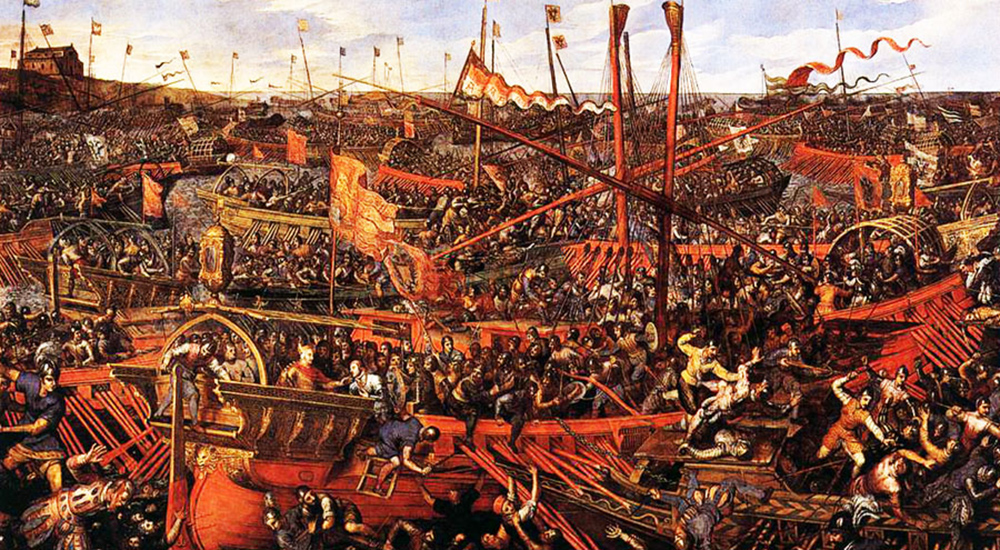
The Napoleonic Conquest
The fall of Constantinople into Turkish hands constituted the first act in the decline of the Serenissima. For the Ottomans had expanded along the Balkans, going so far as to threaten Venetian rule in the Aegean area: after the loss of Cyprus and Crete, Venice was forced to sign peace with the Turks in 1573. She tried to recover the lost territories with the help of the Holy League, but not even the victory at Lepanto allowed her to do so. The plague that mowed down the island’s population in 1630, wiping out a third of its population, added to a situation of deep crisis, which the Habsburgs took advantage of to boost the port of rival Trieste.
In the 18th century, Venice attempted to reestablish its prestige by conquering Tunis, but with the outbreak of the French Revolution, it was the French and Austrians who fought over Venetian territory. In 1797, Napoleon tried to ally with the city, which he refused: in revenge, the emperor looted the Bucintoro, the doge’s ship, of all the gold and valuables it contained and sent it to France, where it was used as a prison. Doge Ludovico Manin and the Grand Council abdicated and a pro-French municipal government was formed. The last act of revenge against the Venetians was the signing of the Treaty of Campoformio on October 17, 1797, by which Napoleon ceded Venice to Austria. It was in 1805 that Venice was annexed to the Napoleonic Kingdom of Italy, becoming part of Lombardo-Veneto until 1814, when it was returned to the Habsburgs.
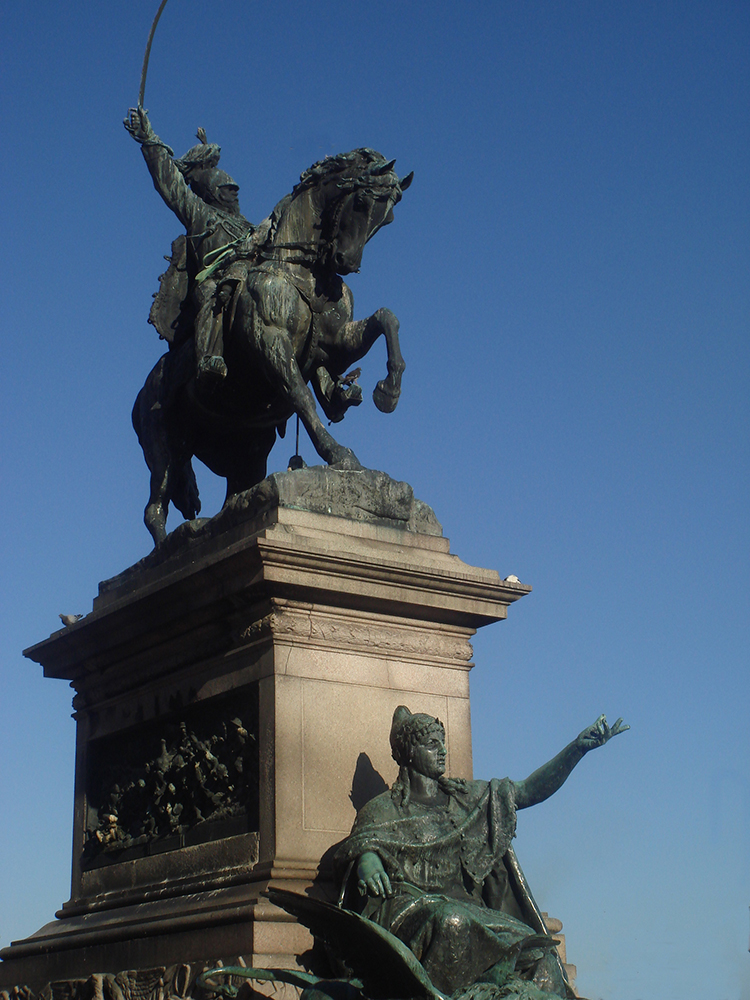
Venice at the time of the Unification of Italy
After the proclamation of the Unification of Italy in 1861, the battle for the recovery of irredent lands, which included Veneto, in Austrian hands, began. In 1866, Italy allied with Prussia in order to reduce Habsburg power within the German Confederation: in return for the aid promised to Prussia, Italy would get Veneto back. After an initial defeat at Custoza, the Italo-Prussian army got the better of the Austrians, who by the Treaty of Prague of August 23, 1866, had to cede Lombardy-Venetia to France, with the agreement that the then Emperor Napoleon III would return it to Italy. The Kingdom of Italy convened a plebiscite to sanction the annexation of the territories: known as the Plebiscite of Venice, the Venetian provinces and that of Mantua, it had almost total support. The final cession took place on October 19: commander Le Bœuf handed Venice back into the hands of Louis Michiel, tricolored gonfalons were flown in St. Mark’s Square, and three processions paraded through the city, later rejoining under the Basilica.
On November 7, 1866, King Victor Emmanuel II entered Venice, making the annexation to the Kingdom of Italy final. Welcomed by tricolors and posters celebrating the newborn cession, he was escorted to the Doge’s Palace where he was handed the 1848 deed by which the Venetian Republic had sworn allegiance to the Savoy.
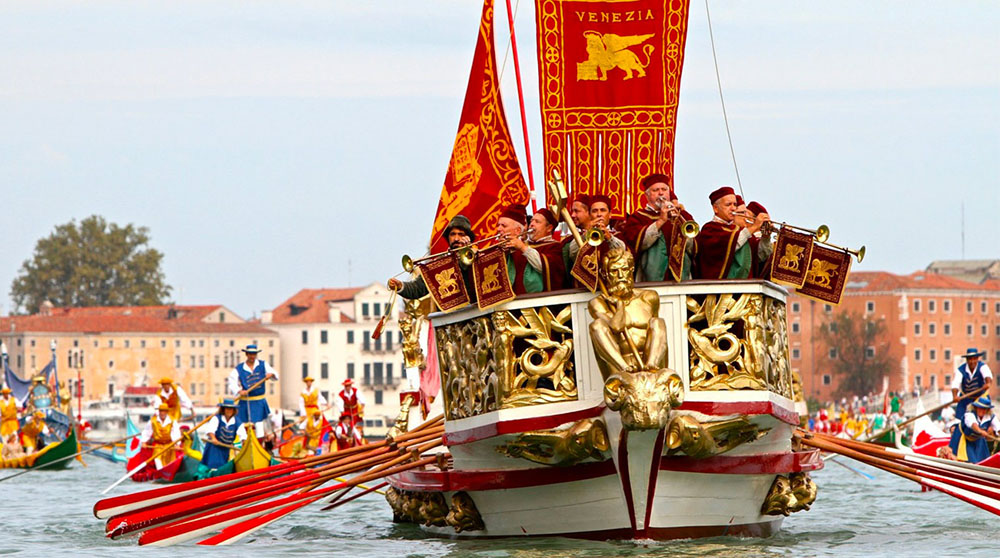
From Unification to the Present
One of the most important initiatives of the modern era was the establishment, on April 19, 1893, of the Art Biennale. Sanctioned by the junta led by Mayor Riccardo Selvatico, the first exhibition was inaugurated on April 30, 1895, and still today, supplemented by the architecture exhibition, it is a regular event for Venetians and others.
Today Venice is a city devoted entirely to tourism, but it does not forget its celebrated origins and its past as a maritime power. The most significant celebration in this regard is the Sposalizio del Mare, held every year on Ascension Day. It is reminiscent of the most characteristic Venetian ceremony in the days of the Serenissima, when the doge, accompanied by the patriarch and Venetian nobles, embarked on the Bucintoro and went to the Lido’s Bocca di Porto. Once he arrived, escorted by other boats, he poured into the water a jar of blessed water and a ring also blessed by the patriarch, to symbolize the union of Venice with the sea, uttering the formula “Desponsamus te, mare. In signum veri perpetuique dominii” (We marry you, sea. In sign of true and perpetual dominion).
Even today, this ceremony is repeated every year: the mayor of Venice and the patriarch, aboard the bissona Serenissima, accompanied by a water regatta procession with men and women in period costumes on board, throw a blessed ring into the water to commemorate the important tradition and renew the bond that has always united Venice with the sea.
Did you know.
In the treasury of St. Mark’s Basilica is preserved an ancient gold ring belonging to a doge, fished out of the waters in recent times: it surely dates back to the rite of the Marriage of the Sea, which has been held every year on Ascension Day since the days of the Serenissima.



